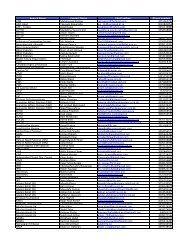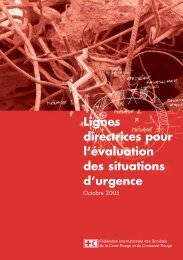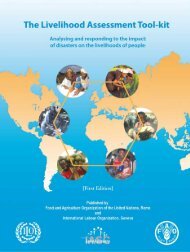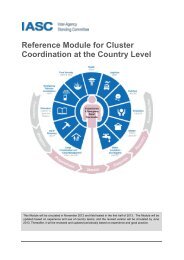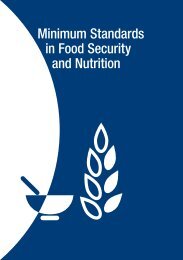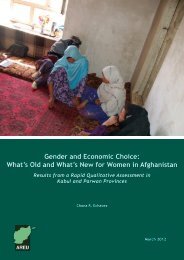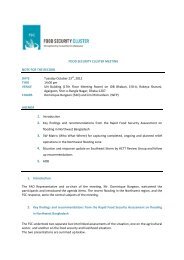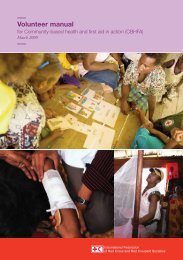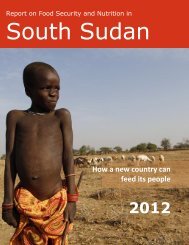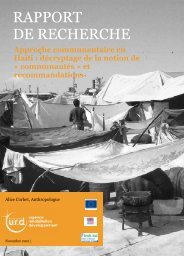Winning Hearts and Minds? - Tufts - Tufts University
Winning Hearts and Minds? - Tufts - Tufts University
Winning Hearts and Minds? - Tufts - Tufts University
Create successful ePaper yourself
Turn your PDF publications into a flip-book with our unique Google optimized e-Paper software.
<strong>and</strong> benefited at the expense of the smallerPanjpai tribes, which were the clear losers. 65 Thisimbalance created resentment <strong>and</strong> conflict <strong>and</strong>undermined prospects of an inter-tribal politicalsettlement within the province. At the sametime, the political cover offered by strongmanAkhundzada’s links with President Karzai <strong>and</strong>the U.S. military, which saw him as useful in thefight against the Taliban, made him untouchable,leaving those who suffered at his h<strong>and</strong>s with nooptions for redress. All of this made thepowerbrokers’ rivals open to Taliban infiltration<strong>and</strong> offers of protection. 66In Uruzgan, the key conflicts also revolvedaround inter- <strong>and</strong> intra-tribal power struggles.As in Helm<strong>and</strong>, many of those who had beendeposed by the Taliban <strong>and</strong> then reinstatedpost-2001 resumed their predatory behavior <strong>and</strong>pursued their rivals in other tribes, in this caseabetted at times by U.S. special forces in theguise of pursuing former Taliban officials as partof the “war on terror.” Former governor JanMohammad Khan (killed in an attack on hisresidence in Kabul in July 2011), the mainPopalzai representative in the province, tookadvantage of his jihadi comm<strong>and</strong>er networks,position as provincial governor, close personalrelationship with President Karzai, <strong>and</strong> status astrusted partner of the U.S. in the “war on terror”to exert tight control over the province. He wasadept at appointing his loyalists to serve in keypositions such as district governors, police chiefs,other government officials, <strong>and</strong> as members ofirregular armed groups. Much of this involvedstrengthening the Popalzai’s position in theprovince. Many of his rivals were forced to leavethe area after being targeted by local authoritiesor international forces (acting on the basis of“tips” received from local informants that theywere either Taliban or involved in the narcoticstrade). Or they simply became disgruntled thatthey were marginalized <strong>and</strong> not brought intothe government network or sought for advice,as people of their social st<strong>and</strong>ing would expect.Some groups (e.g., Ghilzai 67 elders) were in factpro-government, until they were labeled as“Taliban.” Often, targeted individuals werepowerless to deal with their rivals, who were inpositions of power. With no other avenue forredress, <strong>and</strong> in a culture that requires revengeto maintain personal honor, they consideredjoining the insurgency as their only option,both out of resentment <strong>and</strong> out of the need todefend themselves <strong>and</strong> their honor. Accordingto one international official, “When JMK [JanMohammad Khan] was governor, hedestabilized the Ghilzai to such an extent theyhad to go to the Taliban for security against thegovernor. There didn’t use to be lots ofTaliban—JMK is responsible for creating somany.” 68This illustrates the overlapping nature of thedrivers of insecurity; while these abuses occurredalong tribal lines, they were perpetrated by actorsserving in government positions <strong>and</strong> thus are alsoexamples of poor governance. As one respondentnoted, “in the southern provinces the problem isbetween the tribes, not between the government<strong>and</strong> the Taliban. . . . The tribal problem wasalready there but the government turned it into abig problem.” 69In Paktia, both ethnic <strong>and</strong> tribal issues were citedas sources of insecurity. The perceiveddisempowerment of the Pashtuns in general <strong>and</strong>Paktia Province in particular in favor of otherethnic groups <strong>and</strong> areas, especially in the earlydays of the Karzai government, was given as areason why people were not supporting thegovernment. A similar grievance frequentlyexpressed in interviews was the perceived lack ofsupport for Paktia tribes such as the Zadran,65Tribal Analysis Center, “The Quetta Shura: A Tribal Analysis” (Williamsburg, VA: Tribal Analysis Center, October 2009), p. 14. athttp://www.tribalanalysiscenter.com/PDF-TAC/Quetta%20Shura.pdf. Cited in <strong>Winning</strong> <strong>Hearts</strong> <strong>and</strong> <strong>Minds</strong>? Examining the Relationshipbetween Aid <strong>and</strong> Security in Afghanistan’s Helm<strong>and</strong> Province, Stuart Gordon (Feinstein International Center, <strong>Tufts</strong> <strong>University</strong>, April 2011).66The Helm<strong>and</strong> case study focused on the UK’s stabilization program between 2006 <strong>and</strong> 2008, <strong>and</strong> therefore reflects the situation up to thattime. Akhundzada served as governor from 2001 to 2005.67Largest of the four Pashtun tribal confederations, the Ghilzai are primarily located in the east, <strong>and</strong> so are a minority in the south.Historically they been rivals of the Durrani confederation, of which Jan Mohammad Khan was a member.68Interview with international civilian official, Tarin Kot, Uruzgan Province, January 31, 2010.69Interview with Afghan employee of USAID contractor, Tarin Kot, Uruzgan Province, July 6, 2009.32Feinstein International Center



